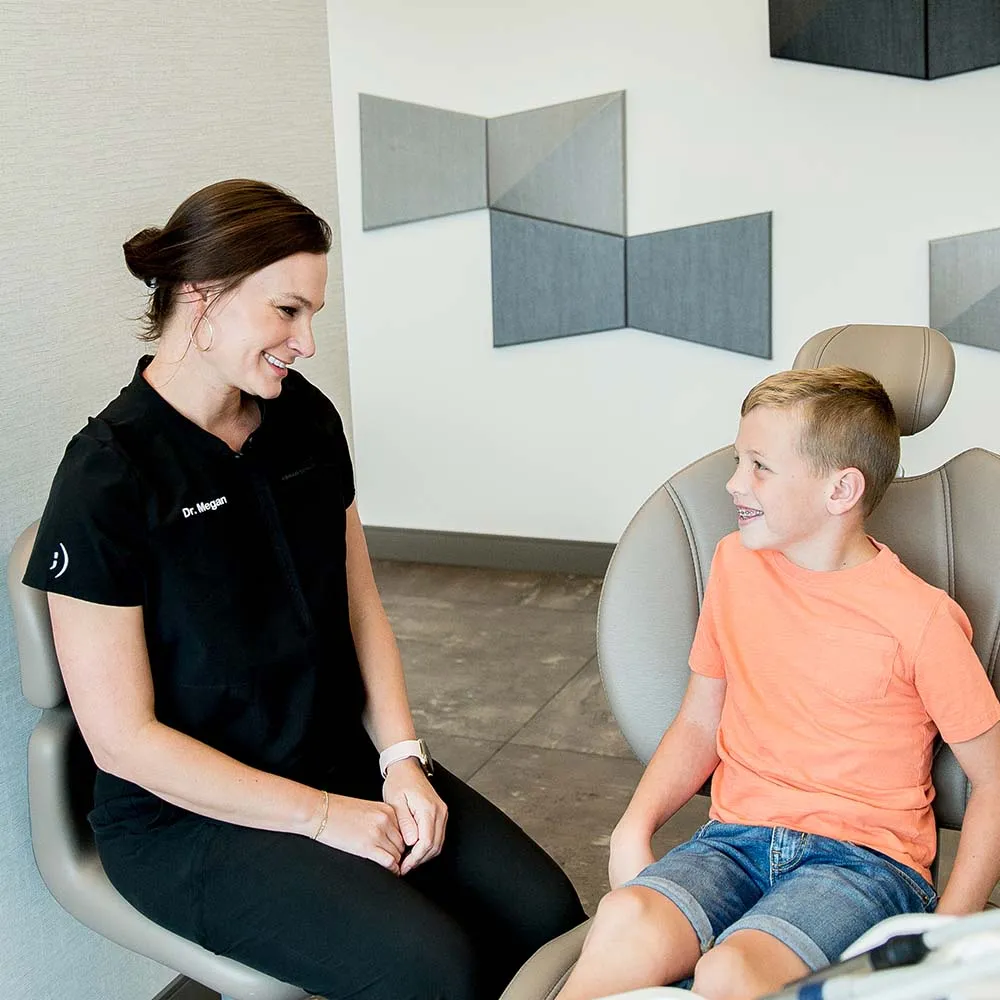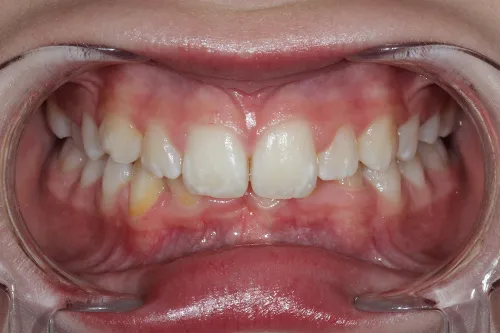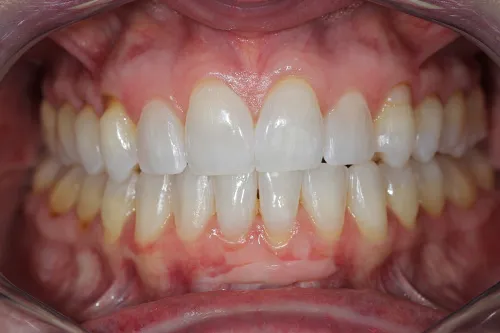Orthodontics
At Innovative Dental, we know there’s no one-size-fits-all approach to straightening a smile. That’s why we offer both Invisalign® and traditional braces—so whether you’re after speed, simplicity, or a tried-and-true solution, you’ve got options that fit your life, not the other way around.

Meet Dr. Megan Westrich
Dr. Megan leads the orthodontic team at Innovative Dental, where she's known for helping patients regain their self-esteem and confidence. She’s passionate about providing personalized care in a comfortable, welcoming environment, using the latest digital tools to deliver faster, more precise results. From early orthodontic interventions to adult smile transformations, her tech-forward approach makes treatment more efficient—and more enjoyable—for every patient


Invisalign®
Invisalign's clear aligner system straightens teeth with comfort and discretion, giving you the smile you’ve always wanted—without brackets or wires. Innovative Dental is one of Springfield’s top Invisalign providers and proudly holds Platinum Plus Provider status.
Traditional Braces
Traditional braces have come a long way—and when started early, they can do even more. We take a two-phase approach that starts around age 7–8 to gently guide jaw and palate development, helping permanent teeth come in with the space they need. After Phase I, braces are removed to let adult teeth erupt naturally. Once those are in, Phase II begins to align and fine-tune the smile—often without the need for extractions. It’s the same cost as a single round of braces, with smarter timing and better long-term results.

T.A.D.s (Temporary Anchorage Devices)
A gummy smile used to mean surgery was your only option. With TADs, that’s no longer the case. These small devices give us precise control to shift teeth and gently reshape your smile line—without the need for extensive surgery. Dr. Westrich uses TADs to deliver natural-looking results and a more balanced smile, less invasively.
Book a free orthodontic consultation.
We’d love to hear more about your family’s orthodontic needs. Schedule a no-obligation consultation to go over your options and learn more about our approach to creating beautiful, lasting smiles.
A straight-up better smile.
Innovative has been so good to me! I got braces and within a year I was able to get them off. They always have treated me so good and are super knowledgeable. Cleanliness is huge to me and everything is so clean and organized! I will always recommend innovative! Also, Jennifer was just so amazing to me the entire time and so personable, will forever be thankful for how much attention she put into my car!
I came to innovative for my Invisalign treatment. They have the sweetest and most patient staff. I had to bring my son to most of my appointments and they were so understanding and friendly. Plus they give you coffee so of course that’s a bonus! Highly recommend for all your orthodontic needs!
BEST dental experience EVER!! I will be with them for life! The team is so friendly and the atmosphere is very relaxing! Dr. Megan created the perfect treatment plan for me and everything turned out amazingly! Thank you for helping me finally be able to love my smile!
We had a wonderful experience with Innovative Dental! They were incredibly thorough during my son’s orthodontic consultation, taking the time to explain every option in detail. They also walked us through the financial aspects with patience and transparency, which made a big difference. Dr. Megan Westrich and Ashley were both so kind, professional, and pleasant to work with. My son felt very comfortable and decided to switch all of his care to Innovative—he truly trusts Dr. Megan and is excited to start his journey with braces here. We’re so grateful to have found this team! Thank you!!!!
My daughter had an amazing experience with her two year orthodontic treatment at Innovative. I’m truly astounded by her BEAUTIFUL smile. I am grateful to every member of the team that helped her through her journey and to Dr Megan for taking such good care of her! HUGE thank you to Rachel, Des and Jennifer! You’re all the best! We love Innovative Dental and you will too!
Innovative is hands down the best dental place I’ve been to. I used to be terrified going to the dentist, but now I get excited going. The people, relaxing environment all help. Dr. Megan with Ortho is phenomenal at what she does! She and the Ortho girls have had to explain things to me lots and have many reassurance conversations with me! Had a cleaning with Jackie and she did amazing! Can’t recommend this place enough!!
I love, love, love, innovative. I've been going for 7 years now, and I will never switch dentists ever. They are so kind and do an amazing job! I've had 2 rounds of braces with them and both were super effective. I love Dr. Meghan! ❤️ also you get a sweet drink afterwards!!! Plus cookies!!!! You get it all here! It's such a beautiful place and suggest that if ur looking for a dentist office, go here!!!!!!!
My daughter and I had a great experience at Innovative Dental. The facility is beautiful and clean. The staff is friendly and welcoming. Ashley was wonderful! She put my daughter at ease with her friendly, warm demeanor and expertly walked us through the entire experience. I’m excited we chose Innovative Dental for our orthodontic needs.
My experience was with Invisalign and it was simple and seamless. They did a great job of explaining everything and the environment is very comfortable, inviting, and relaxing! I definitely recommend this office.






